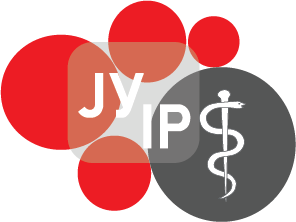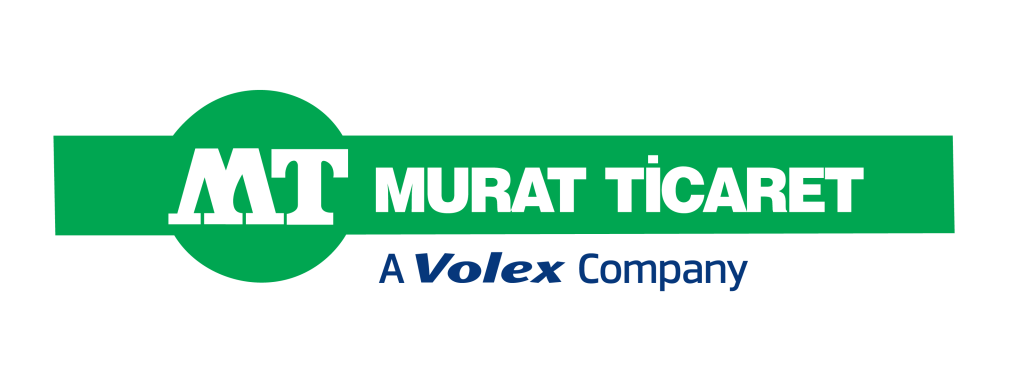Private Ethernet Lines
Securely interconnect LAN networks across different locations with direct fiber lines
What are Private Ethernet Lines?
Private Ethernet Lines integrate LAN networks of your offices and branches across different locations using a high-speed fiber network that operates independently of the Internet. This allows servers, computers and other devices from different locations to establish long-distance direct connections with guaranteed bandwidth. You can connect two locations using a single line or multiple locations to create a network. Multiple technologies are supported, such as Ethernet Private Line, Ethernet Virtual Private Line, Ethernet Private LAN, Ethernet Virtual Private LAN, Ethernet over MPLS and Ethernet over SDH/SONET. Read more about these technologies.
Available for clients in:  All countries
All countries
 All countries
All countriesRequest Quote
Advantages of Interspace Private Ethernet Solutions
- Guaranteed bandwidth and very low latency between long-distance locations, which is very important for real time applications.
- Private communication because packets travel outside the Internet.
- Easy to maintain and migrate since no public IP addresses are involved.
- Lines terminate at Ethernet interfaces, enabling easy integration with your switching and routing devices.
- Ethernet as underlying protocol, allowing you to run your own network technologies on top of it, like VPN and custom QoS policies.
Interspace operates its own fiber-optic network in Macedonia, spanning over 1,500 kilometers. The network extends to nearly all cities and border crossings. We have our most extensive coverage in the capital city, reaching all districts.On a regional level, Interspace operates a network with a total length of around 2000 km, en route Macedonia, Greece, Bulgaria, Serbia, Slovenia, Croatia, Bosnia, Montenegro, and Kosovo. Through this network, we connect directly to global providers at their nearest point in the region. The connections are redundant and include multiple geo-independent super-fast DWDM lines, ensuring the lowest latency and highest quality traffic flow. The core of the network features terabit capacity for switching and throughput. From the core down to each end-point user router, all carrier devices provide certified line-rate non-blocking forwarding, ensuring maximum bandwidth for all frame sizes across all ports simultaneously.For our cloud and online video platform, Interspace operates an IT infrastructure in various locations across Europe (Germany, Netherlands, France, United Kingdom, Austria, Macedonia, Serbia, Bulgaria, Greece), North America (USA, Canada) and Asia/Oceania (Australia, Japan, Singapore). Read more
Interspace's fiber network is designed according to all relevant ISO standards and constructed by following strict procedures, ensuring compliance with the highest quality requirements. We hold the highest accreditation for network infrastructure design, the A-grade license, attesting to our capability to design high-grade fiber optic networks.We have our own teams and equipment for the entire process of constructing, operating and maintaining the network. We employ fusion splicing instead of mechanical splicing of the fibers, ensuring long-term durability and reliability. The link quality is verified through extensive OTDR, RFC 2544 and ITU Y.1564 measurements to guarantee the best transmission.We conduct continuous 24/7 proactive monitoring on every segment of the infrastructure. At the root level, we reserve two fibers in each cable for measuring the general cable condition. We monitor multiple components, such as power supplies, temperature, and traffic, in every network device, including constant verification of optical power levels at each end-point interface. This allows us to act quickly and flawlessly, ensuring the guaranteed SLA and connection uptime.
Interspace operates in accordance with the highest standards and adheres to strict procedures, regularly validated through certifications from TÜV NORD CERT GmbH, as detailed below:
- ISO 27001: Certification for our system managing information security.
- ISO 20000-1: Certification attesting to our management processes for the effective delivery of IT services.
- ISO 22301: Certification for ensuring business continuity in the event of an incident or disaster.
- ISO 45001: Certification for our management system which ensures workplace safety and health for our employees.
- ISO 9001: Certification for our quality management system.
- ISO 14001: Certification attesting to our responsible environmental management system.
- License A for design: The highest accreditation for designing telecommunication infrastructure projects.
- License A for construction: The highest accreditation for building telecommunication infrastructure projects.
Technologies for Private Ethernet Lines
Multiple technologies are available for Private Ethernet Lines services, making them ideal for a wide range of applications. These services leverage different implementations to meet specific business needs, providing secure, high-performance connectivity. The following sections explore various types of Private Ethernet Lines, including Ethernet Private Line, Ethernet Virtual Private Line, Ethernet Private LAN, Ethernet Virtual Private LAN, Ethernet over MPLS, and Ethernet over SDH/SONET.Ethernet Private Line (EPL)
Ethernet Private Line (EPL) is a point-to-point Ethernet service that provides a dedicated, high-bandwidth connection between two locations. It operates at Layer 2 of the OSI model, offering transparent, untagged transport of Ethernet frames. EPL is ideal for businesses needing reliable, low-latency connectivity for critical applications such as data replication, real-time communications, and secure enterprise networking.Ethernet Virtual Private Line (EVPL)
Ethernet Virtual Private Line (EVPL) is a point-to-point Ethernet service similar to EPL but with more flexibility. Unlike EPL, which provides a dedicated connection, EVPL uses VLAN tagging to allow multiple virtual connections over a single physical link. This makes EVPL suitable for businesses that need to connect multiple locations cost-effectively while maintaining traffic separation and quality of service.Ethernet Private LAN (EP-LAN)
Ethernet Private LAN (EP-LAN) is a multipoint-to-multipoint service that connects multiple locations within a metropolitan area network (MAN) as if they were on the same local area network (LAN). EP-LAN provides high-bandwidth, low-latency connectivity, making it ideal for applications requiring extensive inter-site communication, such as enterprise resource planning (ERP) systems, large-scale collaboration, and unified communications.Ethernet Virtual Private LAN (EVP-LAN)
Ethernet Virtual Private LAN (EVP-LAN) offers the same multipoint-to-multipoint connectivity as EP-LAN but with added flexibility through VLAN tagging. EVP-LAN allows businesses to segment their network traffic by department or application while sharing the same physical infrastructure. This service is perfect for organizations needing scalable, secure connectivity for multiple business units or applications.Ethernet over MPLS
Ethernet over MPLS (EoMPLS) uses Multi-Protocol Label Switching (MPLS) technology to transport Ethernet frames across wide-area networks (WANs). EoMPLS provides high-performance, scalable, and reliable connectivity with advanced traffic engineering capabilities. This service is ideal for businesses requiring seamless integration of their Ethernet networks over geographically dispersed locations, supporting various applications such as VoIP, video conferencing, and cloud computing.Ethernet over SDH/SONET
Ethernet over SDH/SONET is a method of transmitting Ethernet frames over Synchronous Digital Hierarchy (SDH) or Synchronous Optical Networking (SONET) infrastructure. This service leverages the reliability of SDH/SONET networks, offering high availability and predictable quality. Ethernet over SDH/SONET is suitable for businesses that need to extend their Ethernet services over long distances with stringent quality of service (QoS) requirements, such as financial institutions and service providers.Featured Clients
Finance
Banks, insurance companies, funds and other financial institutions are rapidly transforming into agile and e-communication-friendly enterprises. Interspace's solutions boost this transformation by providing premium-grade connectivity, secure isolated fiber lines between bank branch sites, robust turn-key VPN networks for secure data transmission, dedicated cloud services for critical applications and data storage, and more. This helps them to enhance operational efficiency, improve customer service and comply with regulatory requirements.
Software Development
Effective communication and server infrastructure reduce collaboration time and speed up market delivery for software development companies. Our solutions enhance data flow between globally distributed engineering teams, boosting efficiency. We provide VPN for secure multi-site connectivity, private networks for isolated communication, cloud servers for scalable computing and high-grade internet connectivity. We support leading development companies with global operations in Canada, the USA, the Netherlands, Denmark, Sweden, Austria, Germany and other countries worldwide.
Public Sector
Government agencies, municipalities and other organizations in the public sector are required to follow the trends in the era of rapid digital transformation. Interspace's solutions ensure this by providing cloud services with disaster recovery for safeguarding their operations 24/7/365, dedicated fiber connections and robust VPNs for secure and efficient inter-agency communication, high-grade internet, data center colocation, an online video platform for community engagement ,and more.
PHI - Dental Clinical Centre
Institute for Transfusion Medicine
Manufacturing
The manufacturing and industrial sector rely on real-time data and robust communication networks to optimize production processes and ensure operational efficiency. Interspace provides high-capacity, low-latency connections, cloud services for scalable computing, data center colocation for secure data storage and private Ethernet networks that support automation, remote monitoring and data analytics. Our solutions help industrial clients enhance productivity, reduce downtime and maintain competitive edge in a rapidly evolving market.
Trade
The trade & transport sector depends on efficient communication networks to track shipments, ensure timely deliveries, manage transactions, supply chains and customer interactions. Interspace provides high-speed internet, secure VPNs, cloud services for scalable business applications, dedicated servers for critical workloads and Private Ethernet networks that enable seamless data exchange, online trading and real-time inventory management. Our solutions help trading companies stay competitive, streamline operations and enhance customer experience.
Media
The media industry relies on high-speed, reliable networks to distribute content, collaborate on projects and manage digital assets. Interspace provides an online video platform for broadcasting and video on demand, high-capacity and low-latency connections, cloud services for content distribution to multiple locations in different parts of the world and Private Ethernet lines that support live broadcasting and video production. Our solutions help media companies enhance production quality, streamline workflows and reach more audiences worldwide.
Education
Educational institutions are upgrading their systems to improve learning experiences and streamline administrative processes. Interspace's solutions support these advancements by providing robust cloud services for scalable computing, secure VPNs for safe remote access, high-speed internet for seamless online learning and disaster recovery solutions for secure storage of sensitive information.
Energy
The energy sector requires reliable and secure communication networks to manage critical infrastructure and support remote operations. Interspace's solutions offer high-speed, resilient connectivity that enables efficient data transfer between control centers, power plants, and field sites. Our secure VPNs and dedicated fiber lines ensure uninterrupted communication, supporting the operational integrity and security of energy networks.
Diplomacy
Diplomatic missions demand the highest levels of security and reliability for their communication needs. Interspace offers customized solutions that ensure secure, encrypted and uninterrupted data transmission. Our carrier-grade internet, dedicated lines, cloud services for secure data storage and processing and Metro Ethernet networks enable embassies and consulates to maintain confidential communications, access global networks and support their diplomatic activities effectively.
Testimonials for Communication services
Cosmic Development is a global provider of skills, knowledge, and expertise in the IT industry. We've been partners with Interspace for years now, and they've been nothing short of amazing for us! We have both internal and client facing services running stable with no network hiccups on our Interspace connection. We've recently survived a full office migration and, thanks to Interspace, their team, their pro-activity and their attitude, we've had 0 downtime on our Internet connection.Their flexibility and response time are definitely a key factor in our relationship. Between our two offices, in two different cities, our Internet connection and services are always running and our employees are always covered. I would highly recommend Interspace to everyone, as I am more than thrilled to be working with them!
Causeway Connect is a multi-disciplinary team providing services in 20 countries, in the range of software development, helpdesk, HR and recruitment, finance and accounting, sales and marketing.As a company that services 300+ clients worldwide, we are very pleased that Interspace is able to consistently provide reliability and stability of the multiple Internet connections it delivers to us. We're especially impressed by their commitment to excellence and professionalism. The efficiency in service delivery and technical support are also worthy of a special mention, particularly to those looking for best-in-class Internet services.
Nexeon Technologies is a global technology company offering fully managed hosted infrastructure solutions, from personal & business website hosting, to virtual private cloud units.Interspace dedicated hosting servers are an important part of our cross-continental infrastructure. We are delighted with Interspace's continuous professional support and superb network.
Hi-Tech Corp. is a globally renewed company and the European leader in Printed Circuit Boards technologies. We serve top-level customers such as Continental, Siemens, Bosch and alike. It is of vital importance in our business to use communication technologies with highest reliability and uptime.Hi-Tech Corp. turned to Interspace for their feature rich technology for high-grade connectivity services. With Interspace's Dedicated Internet Access service, backed by their pro-active technical support, we are able to leverage our advanced applications and tools and communicate with our international partners with ease.
We're a globally recognized TV/video production company with more than 103 international awards. We can state with confidence that Interspace is a highly motivated and responsible telecom provider. Setting up the Internet service was seamless with the help of their dedicated Account Manager, who also provided valuable guidance in choosing the right features for our needs.Their dedicated and talented personnel is proactively securing the quality of service. The selection of Interspace as the Internet provider was certainly a worthwhile decision for our company.





































































 English
English Deutsch
Deutsch Македонски
Македонски Slovenščina
Slovenščina Srpski
Srpski Shqip
Shqip Български
Български